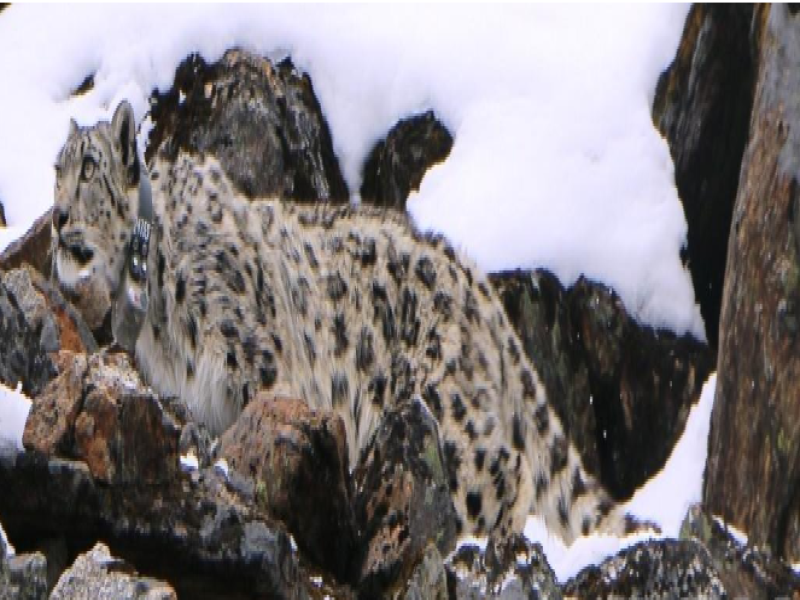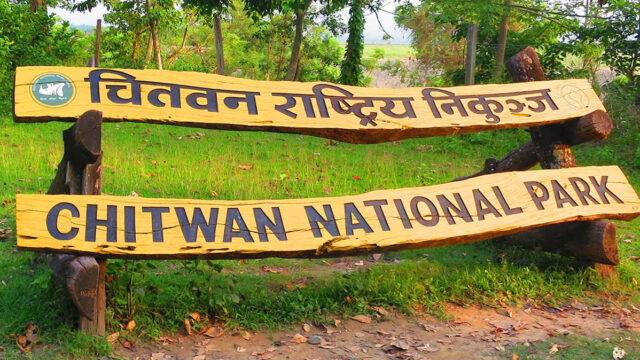In celebration of the 11th International Snow Leopard Day, a new survey report has been released today, revealing the presence of 13 adult snow leopards in the Kanchenjunga Conservation Area. The report was presented during an event organized by the Department of National Parks and Wildlife Conservation (DNPWC) and the Department of Forest and Soil Conservation under the Ministry of Forests and Environment. The snow leopard survey, conducted between April 4 and June 2, 2024, estimates the population to range from 9 to 24 adult leopards.
Using scientific and reliable research methods, the survey employed camera traps in various Himalayan protected and forested areas. The study covered approximately 2,035 square kilometers, using automatic cameras set in 16 square-kilometer grids for 60 days to capture and analyze photos of the snow leopards.
At the event, Minister of Forests and Environment, Ain Bahadur Shahi Thakuri, officially released the report by pressing a computer button, highlighting the need for collaboration between the government, local communities, and concerned stakeholders to protect snow leopards. Minister Thakuri emphasized the importance of launching conservation campaigns to increase the snow leopard population, stating, “If legal amendments or revisions are needed to control poaching, the ministry is prepared to act. Raising awareness among local communities is essential to engage them in the conservation efforts.”
State Minister of Forests, Rupa Bik, underscored the challenges of snow leopard conservation and called for coordination between the government, donor agencies, and concerned bodies to tackle these issues. She stressed that the snow leopard, found in challenging Himalayan terrains, is a symbol of ecological purity in the region and must be protected.
Forest Secretary Dr. Deepak Kumar Kharal praised the role of local communities, security agencies, and supporting organizations in addressing the challenges of snow leopard conservation. Similarly, DNPWC Director General Dr. Ram Chandra Kandel discussed the achievements in snow leopard conservation, stating that coordination with relevant agencies continues to be a priority.
Shiv Wagle, Director General of the Department of Forest and Soil Conservation, acknowledged that finding snow leopards in Nepal’s high-altitude regions is a success story, bringing recognition to the country within the global community.
A similar snow leopard survey conducted in Dolpa previously revealed the presence of 90 snow leopards in the region. During the event, the Dolpa National Park office also unveiled a report on snow leopard research in the eastern forest area of the park and presented framed photographs of wild yaks taken in Dolpa National Park.
Snow leopards, found in only 12 countries, are considered an indicator of a pristine Himalayan environment. These countries include Nepal, Afghanistan, Bhutan, China, Kazakhstan, Kyrgyzstan, India, Mongolia, Russia, Pakistan, Tajikistan, and Uzbekistan. The theme for this year’s International Snow Leopard Day is “Protecting Snow Leopard Habitats for Future Generations,” emphasizing the need to secure their natural habitats and safeguard the health of Himalayan ecosystems.
Snow leopards are regarded as a vital part of the high-altitude ecosystem, with an estimated population of 300 to 500 in Nepal and 4,000 to 6,500 globally. These majestic cats, known for their long tails, which they use for balance, occupy the top of the food chain in Nepal’s protected high-mountain habitats and are a crucial indicator of ecological health.
DNPWC is working on compiling national-level statistics by coordinating with various agencies to integrate data from previous snow leopard surveys conducted in Dolpa (Shey-Phoksundo National Park and surrounding areas), Humla district, the Manaslu Conservation Area, and the Gaurishankar Conservation Area.
Source: RSS






